30 மே, 2023 in Mega Environment, UPSC
Critically Endangered Species of India- The Gliding Frog | UPSC
CRITICALLY ENDANGERED SPECIES
(C) REPTILES AND AMPHIBIANS:
4.The Gliding Frog (Rhacophorus pseudomalabaricus)
 |
| The Gliding Frog |
The Gliding Frog (Rhacophorus pseudomalabaricus) is endemic to the Western Ghats. This species is confined to the rain forests of the Western Ghats and occurs at elevations of greater than 1000m. This species has been recently described in the year 2000.
CONSERVATION STATUS: Critically Endangered.
HABITAT: Rainforests above 1000m altitude.
DISTRIBUTION: Indira Gandhi National Park and surrounding areas of Anamalai hills, Tamil Nadu.
THREATS: Conversion of forested areas for timber and non-timber plantations, and timber extraction activities.
ALSO READ: Four-toed River Terrapin
in Mega Environment, UPSC
Critically Endangered Species of India- Four-toed River Terrapin | UPSC
CRITICALLY ENDANGERED SPECIES
(C) REPTILES AND AMPHIBIANS
3. Four-toed River Terrapin or River Terrapin (Batagur baska)
 |
| Four-toed River Terrapin |
Four-toed river terrapin or Northern River terrapin (Batagur baska) is a critically endangered turtle. The omnivorous diet of the river terrapin and other terrapin species, makes them an essential part of the effi cient clean-up systems of aquatic habitats.
CONSERVATION STATUS: Critically Endangered.
HABITAT: Freshwater rivers and lakes.
DISTRIBUTION: Bangladesh, Cambodia, India, Indonesia, Malaysia.
THREATS: Use of flesh for medicinal purposes, demand for eggs, which are considered a delicacy.
ALSO READ: Leatherback turtles.
29 மே, 2023 in Mega Environment, UPSC
Critically Endangered Species of India- Leatherback turtles | UPSC
CRITICALLY ENDANGERED SPECIES
(C) REPTILES AND AMPHIBIANS:
 |
| Leatherback Turtles |
in Mega Environment, UPSC
Critically Endangered Species of India- Gharial | UPSC
CRITICALLY ENDANGERED SPECIES
(C) REPTILES AND MAMMALS:
in Mega Environment, UPSC
Critically Endangered Species of India- The Pygmy hog | UPSC
CRITICALLY ENDANGERED SPECIES
(B) MAMMALS:
 |
| The Pygmy hog |
Also Read: Bengal Florican
in Mega Environment, UPSC
Critically Endangered Species of India- Bengal Florican (UPSC)
CRITICALLY ENDANGERED SPECIES
(A) BIRDS:
5. BENGAL FLORICAN (Houbaropsis bengalensis)
 |
| Bengal Florican |
Bengal Florican is a rare bustard species that is very well known for its mating dance. Among the tall grasslands, secretive males advertise their territories by springing from the ground and fl itting in the air to and fro.
CONSERVATION STATUS: Critically Endangered
HABITAT: Grasslands sometimes intersperesd with scrublands.
DISTRIBUTION: Native to only 3 countries in the world - Cambodia, India and Nepal. In India, it occurs in 3 States namely Uttar Pradesh, Assam and Arunachal Pradesh.
THREATS: Ongoing conversion of the bird’s grassland habitat for various purposes including agriculture is mainly responsible for its population decline.
ALSO READ: Vultures
in Mega Environment, UPSC
Critically Endangered Species of India- Vultures (UPSC)
CRITICALLY ENDANGERED SPECIES
(A) BIRDS:
 |
| Vultures |
- Varying vultures have different conservation statuses. The three species (White-backed Vulture Gyps bengalensis, Slender-billed Vulture Gyps tenuirostris and Long-billed Vulture Gyps indicus) are now classified as critically endangered.
 |
| Slender-billed Vulture |
28 மே, 2023 in Mega Environment, UPSC
Critically Endangered Species of India- White-bellied Heron (UPSC)
CRITICALLY ENDANGERED SPECIES
(A) BIRDS:
 |
| White-bellied Heron |
in Mega Environment, UPSC
Critically Endangered Species of India- The Forest Owlet (UPSC)
CRITICALLY ENDANGERED SPECIES
(A) BIRDS:
7 மே, 2023 in Porul Environment, Explainers, Prelims, UPSC
What is the difference between a Marsh, Swamp and Bog ? | IAS Exam
 |
| Image : Worldwildlife |
Wetlands the most biologically productive ecosystems on Earth are areas of land where the water level is at or near the surface of the ground for at least part of the year. They are characterized by the presence of water-loving plants and soils that are saturated or inundated with water. Wetlands can include marshes, swamps, bogs, and fens, and they can be found in both freshwater and saltwater environments.
13 மார்., 2023 in Mega Climate Change, Environment, GS3, TNPSC, UPSC
Heatwaves in India - UPSC
Heatwaves and its effects on India
- Prelims: Climate Change, Air mass.
- Mains (GS3): Conservation, environmental Pollution, Climate Change
WHAT IS A HEATWAVE?
A heatwave is a period of unusually hot weather with above-normal temperatures that typically lasts for 3 or more days. A heat wave is a situation of high air temperature that, when experienced by a person, is fatal. The period of heatwave in India is mainly during March to June and in some rare cases even in July. The peak month of the heat wave over India is May. It is the third biggest natural killer in India, with 2,040 people dying of them in 2015.
The prescription given by IMD suggests that a heatwave is considered if the maximum temperature at a station reaches at least 40 degrees Celsius for plains, at least 37 degrees Celsius for coastal stations, and at least 30 degrees Celsius for hilly areas.
.jpg) |
| Credit : Gyan Shahane |
CRITERIA:
If normal maximum temperature is ≤40 degrees Celsius, then an increase of 5 degree Celsius to 6 degree Celsius from normal temperature, is considered to be heat wave. An increase of 7 degree Celsius or more is severe heat wave condition.If normal maximum temperature of a station is > 40 degree Celsius, then an increase of 4 degree Celsius to 5 degree Celsius from normal temperature, is considered to be heat wave. More than 6 degree Celsius is considered to be severe heat wave.
Also read: What are Invasive alien species ? Why are they important
IMPACTS:
- According to a World Bank report, "Climate Investment Opportunities in India's Cooling Sector," from 2030, about 16 to 20 crore people would be exposed to lethal heatwaves in India every year, resulting in 3.4 crore people losing their jobs because of heat stress-related productivity decline.
- Mortality because of the high temperature. According to a 2019 report by the Tata Centre for Development and the University of Chicago, more than 1.5 million people will likely die each year by 2010.
- Heatwaves cause crop production losses and tree mortality to increase. An increase in heat waves can cause an increase in forest fires and a decrease in forest products.
in Mega Environment, GS3, UPSC
What are Invasive Alien Species ? - UPSC
Protecting the Hornbills from the Ills of Climate change
- Prelims: CBD, Invasive plants in news
- Mains (GS3): Climate Change, Invasive plants and Mitigation
What are invasive alien species?
What needs to be done?
International Agreements:
- The Convention on Biological Diversity (CBD)
CBD states that “Each contracting Party shall, as far as possible and as appropriate, prevent the introduction of, control or eradicate those alien species which threaten ecosystems, habitats or species”. The Conference of the Parties (COP) acknowledged the urgent need to address the threat of at its fourth meeting (decision IV/1), in 1998.
- Convention on Migratory Species of Wild Animals (CMS or Bonn Convention)
- Ramsar Convention
- Ramsar Convention
The aim of the Ramsar Convention is the conservation and wise use of wetlands and resources. COP 7 resolution addresses threats of invasive species to wetland ecosystems.
- International Plant Protection Convention (IPPC)
The International Plant Protection Convention is a treaty that aims to prevent introduction of pests of plants and plant products in international trade.
- United Nations Convention on the Law of the Sea (UNCLOS)
States under UNCLOS are required to protect and preserve the marine environment from intentional or unintentional introduction of alien species.- World Organisation for Animal Health (OIE) Agreement
The OIE is the intergovernmental organisation responsible for improving animal health worldwide. It has 169 countries and territories as its members. It aims to guarantee the safety of international trade in animals and animal products and to control animal diseases and zoonoses worldwide while avoiding unjustified sanitary barriers.5 மார்., 2023 in Mega Environment, UPSC
Critically Endangered Species in India- The Jerdon's Courser (UPSC)
What are Critically endangered species?
A species that has been designated as having a dangerously high risk of extinction in the wild is known as a critically endangered species. This indicates that they are in danger of going extinct entirely because their population has drastically decreased. The Kemp's ridley sea turtle, brown spider monkey, Chinese alligator, black rhinoceros, and many other species are examples of critically endangered species. The Red List of Endangered Species, maintained by the International Union for Conservation of Nature (IUCN), classifies species according to the degree of risk.
(A) BIRDS:
1) The Jerdon's Courser (Rhinoptilus bitorquatus):
 |
| The Jerdon's Courser |
The Jerdon's courser is a nocturnal, cursorial bird, mostly active at night, and like lapwings and other coursers, it prefers to walk, although it can fly quite well. Only the northern region of the state of Andhra Pradesh in peninsular India contains it. It is a signature species for the critically endangered scrub jungle.
It was first recorded by Thomas C. Jerdon, a British surgeon, in 1848 in erstwhile combined Andhra Pradesh. The species was considered extinct until it was rediscovered in 1986 by Bharat Bhushan, an ornithologist at the Bombay Natural History Society who made use of local trappers to capture a specimen. The area of discovery was subsequently declared the Sri Lankamaleswara Wildlife Sanctuary.
CONSERVATION STATUS: Critically endangered.
HABITAT: Undisturbed scrub jungle with open areas.
DISTRIBUTION: Jerdon’s Courser is endemic to Andhra Pradesh. However, 19th-century records do attribute its presence in the neighbouring areas of the state of Maharashtra.
Threats: Include the clearing of scrub jungle, the creation of new pastures, the growing of dryland crops, plantations of exotic trees, quarrying, and the construction of the Telugu-Ganga Canal. Illegal trapping of birds is also a threat.
21 நவ., 2022 in Mega Environment, UPSC
Melocanna baccifera | IAS Exam
Melocanna baccifera is a tropical bamboo species also called "Muli" in North East India. It is one of the largest fruit producing Bamboo and native to NorthEast India-Myanmar region.
 |
| Melocanna baccifera |
Recently, This bamboo was on the headlines for attracting predators like Bats, Rats, etc., See basically these Bamboos during its gregarious flowering season produces edible fruits which have the size and shape of pear.
The Problem with the fruit?
- Predators like Bat, Rats line up in large numbers to consume these fruits. Previously Scientists were of the opinion that the animals are getting attracted towards the fruit for its high protein. But a recent research has revealed that the sweet nature of these fruits which is nothing but sugars are the reasons for its familiarity among animals.
- Fruit Chemistry an interesting subfield of chemistry is on rage nowadays as it can help us identify the connections between so many incidents involving Animals and their food behaviour.
WHY is Melocanna baccifera the Issue now?
18 நவ., 2022 in Porul Environment, UPSC
Koronivia Joint work on Agriculture - UPSC Explainer
Koronivia joint work on Agriculture (KJWA) gains it's importance as India opposes the draft text on agriculture, saying the rich developed nations do not want to change their lifestyle to reduce emissions and are "searching for cheaper solutions abroad" It also cited that " developed countries are blocking a pro-poor and pro-farmer decision by insisting on expanding the scope of mitigation to agriculture, thereby comprising the very foundation of food security in the world". [Source: PTI]
What is Koronivia Joint work on Agriculture:
This work integrates Soil, Nutrient Use, Livestock, Socio-economic and food security dimensions of the climate change.
21 ஜூன், 2022 in Porul Environment, TNPSC, UPSC
Protecting the Hornbills - Porul
Protecting the Hornbills from the Ills of Climate change
- Prelims: Climate Change, Kalahari desert, Hornbills.
- Mains: Climate Change, Mitigation Strategies
Rapid climate change has the potential to strongly influence the physiology, behaviour and breeding success of animals. Research frequently point to the fact that increasing temperatures, for instance, are having negative effect on animals. These range from mass die-off events during heat waves to less obvious problems like difficulty in finding food.
For birds like hornbills in Arid Zones, rising temperatures pose a significant problem. Birds in these dry zones usually breed in response to rainfall, which often occurs during the hottest time of the year. Research suggests that high temperatures over a few days or weeks can have negative effects on foraging and body mass. This can lead to reducing the condition of offspring or the probability that young birds will survive to adulthood and breed. Recent Researches see the connection between effects in air temperatures and the breeding output of southern yellow-billed hornbills.
 |
| Kalahari Desert (Src: Encyclopaedia) |
Desert Temperatures and breeding birds :
- Studies claim that the temperature in the Kalahari region have risen from about 34°C to about 36°C from the mid 1990's to the present day. This equates to a warming rate of about 1°C per decade, a rate five times faster than the worldwide average of about 0.2°C per decade.
- It was found that breeding output of hornbills was negatively correlated with increasing air temperatures and the occurrence of drought within the breeding season. Breeding attempts all failed when average daily maximum air temperatures exceeded 35.7°C. And the effects of high air temperatures were present even in non-drought years.
- Considering the strong negative correlation between high air temperature and breeding output, Scientists argue that global warming has likely been the primary driver of the recent, rapid collapse in breeding success of the bird population studied.
 |
| Southern yellow-billed hornbill |
- Overall, though this study is specific to southern yellow-billed hornbills, scientists suggest that the findings are likely applicable to a range of species.
Way forward
In the short term, there are options such as providing water and insulated nest boxes. But in the Long-term, it would be necessary to preserve habitats which warm less rapidly or which can buffer the effects of climate change on biodiversity.
9 ஜூன், 2022 in Porul Current Affairs, Environment
சுற்றுச்சூழல் செயல்திறன் குறியீடு 2022
மத்திய சுற்றுச்சூழல், வனம் மற்றும் காலநிலை மாற்றம் அமைச்சகம், அண்மையில் வெளியிடப்பட்ட சுற்றுச்சூழல் செயல்திறன் குறியீடு 2022-க்கு மறுப்பு தெரிவித்துள்ளது. சுற்றுச்சூழல் செயல்திறன் குறியீடு 2022 அடிப்படை ஆதாரமற்ற மற்றும் அறிவியல்பூர்வமற்ற முறையிலும், வெற்று யூகங்களின் அடிப்படையிலும் வெளியிடப்பட்டுள்ளதாக தெரிவிக்கப்பட்டுள்ளது.
புதிய குறியீடு, மிகக்குறைந்த கரியமில வாயு உமிழ்வு தொடர்பான வரலாற்று தரவுகளை மறைத்துள்ளது. விவசாயிகள் அதிகம் உள்ள வளரும் நாடுகளுக்கு, மண் ஆரோக்கியம், வேளாண் பல்லுயிர், உணவு இழப்பு மற்றும் கழிவுகள் உள்ளிட்டவை முக்கியமானவை. இவை புதிதாக வெளியிடப்பட்டுள்ள, சுற்றுச்சூழல் செயல்திறன் குறியீடு 2022 சேர்க்கப்படவில்லை.
மேற்கூறிய பல்வேறு காரணங்களால், சுற்றுச்சூழல் செயல்திறன் குறியீடு 2022-க்கு, மத்திய சுற்றுச்சூழல் வனம் மற்றும் காலநிலை அமைச்சகம் மறுப்பு தெரிவித்துள்ளது.
செய்தி மூலம்: PIB
3 ஜன., 2022 in Porul Environment
Poland’s border wall will cut Europe’s oldest forest in half
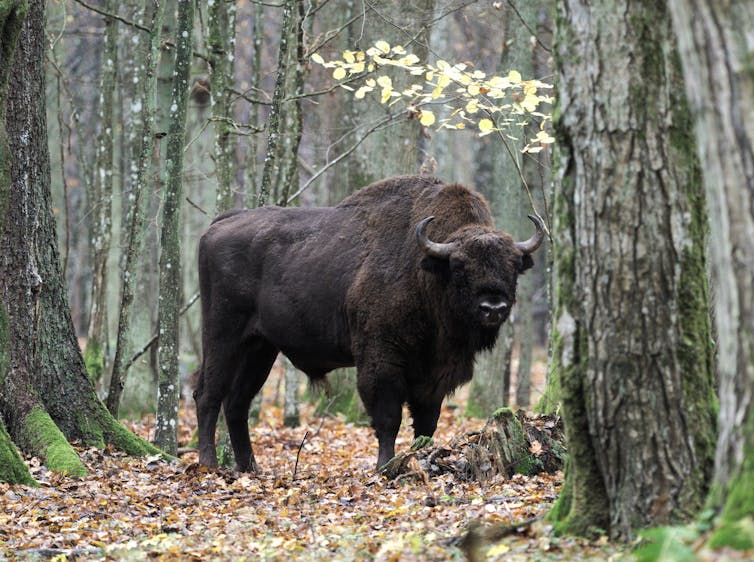
Poland is planning to build a wall along its border with Belarus, primarily to block migrants fleeing the Middle East and Asia. But the wall would also divide the vast and ancient Białowieża Forest, a UNESCO World Heritage site which harbours more than 12,000 animal species and includes the largest remnants of primeval forest that once covered most of lowland Europe.
Frontiers like this are of conservation priority because they often host unique biodiversity and ecosystems but are increasingly threatened by border fortification. We are experts in forest ecosystems and two of us combined have more than three decades of experience working in Białowieża, at the intersections of forest, plant and bird ecology. In the journal Science, we recently described how the border wall planned by Poland would jeopardise this trans-boundary forest.
The core of Białowieża is characterised by old-growth forest rich in dead and decaying wood on which mosses, lichens, fungi, insects and also many vertebrates depend. Big animals such as the European bison, boar, lynx and wolf inhabit the forest on both sides of the border.
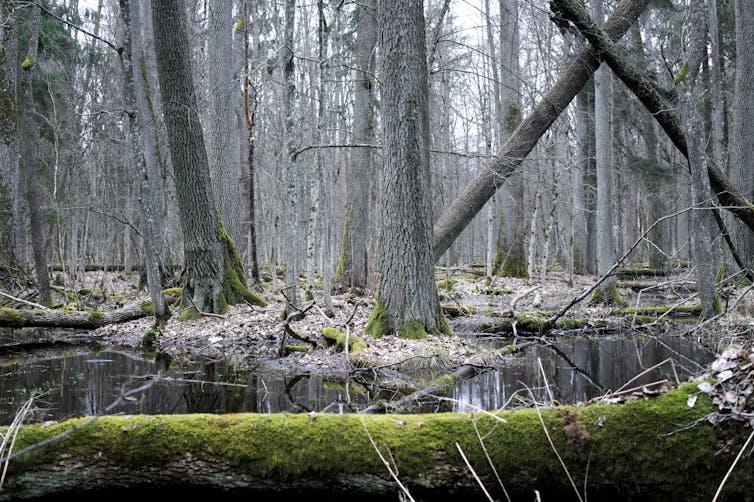
A wall would block the movement of these animals, for instance preventing brown bears from recolonising the Polish side of the forest where they were recently observed after a long absence. The wall would also risk plant invasions, and would mean noise and light pollution that will displace wildlife. The influx of people and vehicles, and already accumulated garbage (mainly plastics) also pose risks, including disease – we already know that humans can transmit COVID to wild species, like deer.
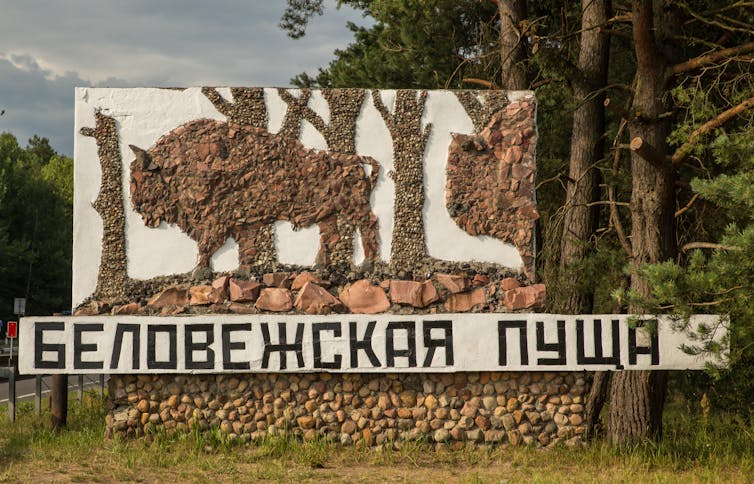
Poland’s wall will be 5.5 metres high, solid, with barbed wire at the top, and will replace a 130 km provisional 2.5m high razor-wire fence built during summer to autumn 2021. This wall will be high enough to affect low-flying birds, such as grouse.
Impeding wildlife more than people
Poland’s proposed wall resembles the barrier built along parts of the US-Mexico border. Research there based on camera-traps shows that such walls deter people less than they impede wildlife. Animals affected by the US-Mexico barrier include jaguars, pygmy owls, and a bison herd whose food and water were split by the border.
The fences across Europe are highly varied, and no mitigation standards exist. A razor-wire fence, constructed in 2015 by Slovenia along its border with Croatia, killed deer and herons with a mortality rate of 0.12 ungulates (hoofed mammals) per kilometre of fence. Along the Hungary-Croatia border, mortality in the first 28 months following construction of a fence was higher, at 0.47 ungulates per kilometre. Large congregations of red deer were also observed at the fence-line which could spread disease and upset the predator-prey dynamic by making them easier for wolves to catch.
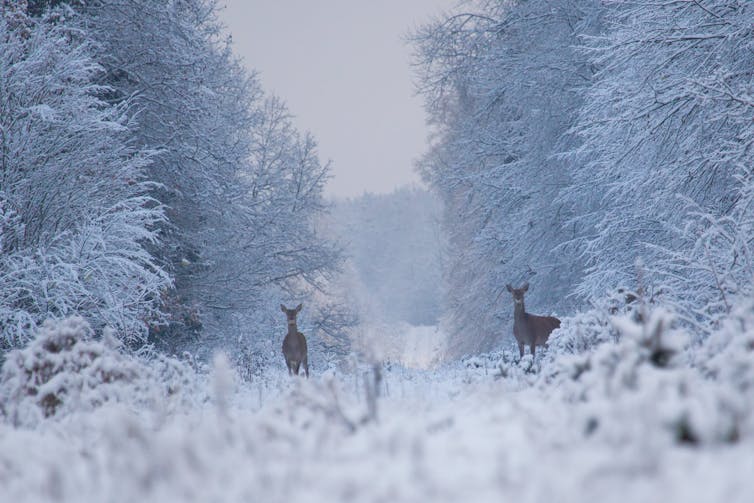
People can and will use ramps, tunnels, and alternative routes by air and sea, whereas wildlife often cannot. Walls have a big human cost too. They may redirect people, and to a lesser extent wildlife, to more dangerous routes, for example, river crossings or deserts, which may intersect with areas of high natural or cultural value.
Physical barriers such as fences and walls now line 32,000 kilometres of borders worldwide with significant increases over the past few decades. According to one recent study, nearly 700 mammal species could now find it difficult to cross into different countries, thwarting their adaptation to climate change. The fragmentation of populations and habitats means reduced gene flow within species and less resilient ecosystems.
Border security over climate action
According to the Transnational Institute, wealthy nations are prioritising border security over climate action, which contravenes pledges made at COP26 such as protecting the world’s forests. Some of the 257 World Heritage forests are now releasing more carbon than they absorb, but Białowieża Forest is still a healthy, well-connected landscape. Poland’s border wall would put this at risk.
The construction of such walls also tends to bypass or be at odds with environmental laws. They devalue conservation investment and hamper cross-boundary cooperation. It was already hard for us to collaborate with fellow scientists from Belarus – the new wall will make cross-border scientific work even harder.
It is possible to mitigate the effects of certain border barriers. But that requires, at the very least, identifying at-risk species and habitats, designing fences to minimise ecological harm and targeting mitigation at known wildlife crossing points. It may also mean assisted migration across a barrier for certain species. To our best knowledge no formal assessment of either social or environmental costs has yet been carried out in the case of Poland’s planned wall.
It’s time conservation biologists made themselves heard, particularly when it comes to the issue of border barriers. As climate change threatens to disrupt borders and migratory patterns of people and of wildlife, we will need to reform, not only policies and frameworks, but also how we perceive borders.
This is already happening without us as “natural borders flood, drift, crumble, or dry up”. Walls – like reactive travel bans – are out of sync with the global solidarity and coordinated actions we urgently need to safeguard life on earth.
Katarzyna Nowak, Białowieża Geobotanical Station, Department of Biology, University of Warsaw; Bogdan Jaroszewicz, Professor of Biology and Director of Białowieża Geobotanical Station, University of Warsaw, and Michał Żmihorski, Biogeography Research Leader, Mammal Research Institute, Polish Academy of Sciences
This article is republished from The Conversation under a Creative Commons license. Read the original article.
20 டிச., 2021 in Porul Environment
When cities were Nature’s haven: a tale from Bangalore

We tend to think that nature and cities are polar opposites. Yet this is not true. As my research on Bangalore or Bengaluru – India’s IT hub – shows, for centuries, the population of this region grew because of nature, not despite it.
In my book Nature in the City: Bengaluru in the Past, Present and Future, I take a deep dive into the ecological history of an Indian city, going way back in the past to the 6th century CE.
Inscriptions on stone and copper plates show that the starting point for a new village was often the creation of a tank, or lake, to collect rain water – essential and life-giving in this unfavourable low-rainfall environment. These inscriptions provide fascinating insights into the close relationship that these early residents had with nature. They describe the landscape as consisting of the lakes, the surrounding irrigated and dry land, the “wells above”, and the “trees below”. This three-dimensional view of the landscape, consisting of two major resources, water (lake) and food (agriculture), nourished by nature below (in the form of wells) and above (in the form of trees) is a remarkably holistic conception of nature.
Unfortunately, in today’s urbanised India, we have lost all trace of this three-dimensional vision.
Declining sources of water
The central areas of Bangalore had 1960 open wells in 1885; today, there are fewer than 50. Bangalore also lost many of its lakes, which were considered to be filthy breeding grounds for malaria, and converted to bus stands, malls, housing, and other built spaces.
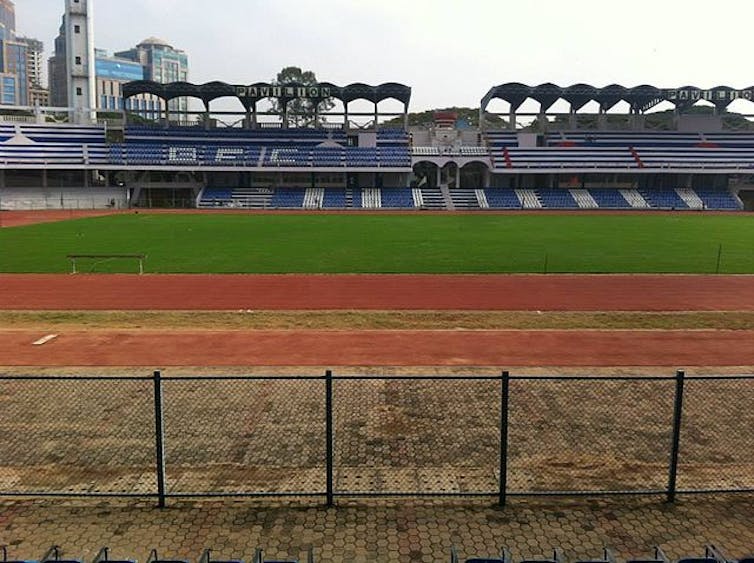
The city’s central Sampangi lake, which supplied water to many parts of Bangalore in the 19th century, was transformed into a sports stadium by the 20th century, leaving behind only a tiny pond for ceremonial religious purposes. As long as lakes and wells supplied water, essential for the activities of daily life, they were worshipped as sacred and protected as life-giving.

Rituals celebrating the overflowing of lakes during the monsoon by paying homage to the lake goddess kept the importance of lakes in the forefront of people’s imaginations. But once piped water began to be provided in the 1890s, these water bodies began to decay. By the end of the 19th century, wells and lakes began to be polluted with garbage, sewage, and even corpses during times of epidemics and disease.
Citizens nurturing nature
What transformed this centuries-long, strong relationship between people and nature? When Bangalore shattered its local loop of dependence by importing water from outside, people forgot the importance of their local sources of water.
Yet, as our research has shown, Bangalore still needs water just as badly for its resilience. The city has grown so large that piped water from distant rivers can no longer supply all its needs.
Thus resurgent citizen movements across Bangalore have begun to focus on protecting and restoring lakes in their neighbourhoods, which will also recharge the water below ground. In some low income settlements, where adequate water supply is a constant challenge, community wells, once ignored, are now being assiduously protected and maintained as well.
The same pattern – of an early, close relationship with nature, followed by a break, and later a resurgent interest in the connection – is also playing out when it comes to trees. Early residents did not only focus on water, but also “greened” this dusty, hot landscape of the dry Deccan plateau. Successive rulers from the 16th century onwards, and common citizens planted millions of trees over centuries.

Each settlement was greened with a gundathope – a woodlot commonly planted with fruiting trees, jackfruit, mango and tamarind – which provided shade, fruits, firewood for cooking, grazing material for cattle, and occasionally timber as well.
When one tree was chopped down, another was planted to ensure continuity. New areas of the city were assiduously greened by administrators, who planted trees, and residents, who watered and cared for them, benefiting from the services they provided. This practice of greening continued during the British colonial period of governance, and later into the 20th century, after Indian independence. Because of the cool climate of Bangalore – in part due to its location on a plateau, but also because of its lakes and trees, created, planted and nurtured by local residents and rulers over centuries – the city became a chosen location for the British army, and later as a science and industrial hub in south India.
It is no accident that Bangalore, once called India’s lake city and garden city, became the country’s IT capital.
Soaring temperatures and rising air pollution
By the late 20th century, this relationship had begun to fray. With rapid growth, roads and other built infrastructure gained importance in the minds of planners. As a consequence, trees were disregarded, and felled in their thousands for development projects in Bangalore.
Inevitably, with more private vehicles on the road, and fewer trees, the city became hotter, and the air severely polluted. Citizens soon realised this connection. So did academics. Our research for instance demonstrated that trees cool the air by 3 to 5ºC, and reduce the temperature of the road surface by as much as 23ºC, as well as significantly reducing air pollution.
Social media to the rescue
Yet citizen movements did not fade. In the early 21st century, the nonagerian Honnamma Govindayya has become an epitome of struggles to protect Bangalore’s environment.

She fought against real estate developers who wanted to convert a local park that her children played in, taking a case all the way to the Supreme Court of India. She won and saved a tiny but very important patch of green from destruction.
Mass citizen protests in recent years have continued and gained significant victories for the city’s green cover, including the reversal of a controversial decision to build a steel flyover, which would have destroyed thousands of trees.
Today these movements are strongly supported by social media. In the flyover case, the twitter tag #steelflyoverbeda (“beda” meaning “no” in the local language, Kannada) went viral, attracting hundreds of followers.
Social media has provided an easier way for once isolated groups of people to connect and coordinate, and often to ratchet up public pressure on nature-blind administrators. Who knows how many would have supported Honamma Govindayya if she had a Twitter account then?
Understanding the history of nature reveals a very different picture from the preconceived idea that, at least in countries like India, where the pressures of development and growth are so large, nature and cities cannot coexist.
Today, this perspective on the ecological history of Bangalore can help city-dwellers worldwide understand why nature in the city is not just important for the metropolis’s past, but also essential for its resilient future.![]()
Harini Nagendra, Professor of Sustainability, Azim Premji University
This article is republished from The Conversation under a Creative Commons license. Read the original article.
இந்த வலைப்பதிவில் தேடு
Recent posts
- பதிவுகள் ஏற்றப்படுகின்றன...






